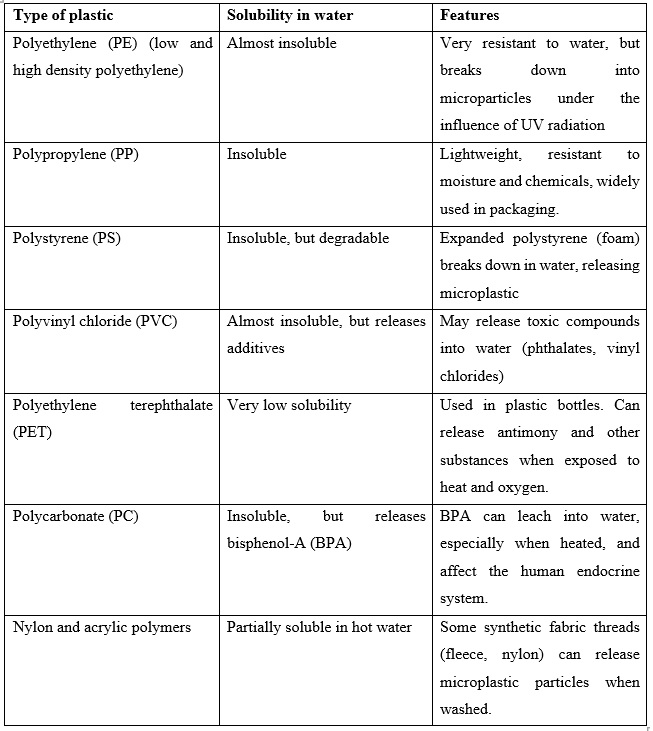Plastic is the most popular material for manufacturing in many branches of the economy. Plastic has a lot of positive qualities: cheap, light, convenient, dielectric and has a fairly long “lifespan” and etc. But it also has a seriously negative qualities: environmental pollution due to the impossibility of recycling and the large difference between the amount of plastic produced and recycled; accumulation of plastic in the human body.
Today, scientists are conducting research that has revealed that by the end of life, approximately 1 teaspoon of microplastic accumulates in the human body throughout life. Most of the plastic accumulates in the human brain, liver, and kidneys.
Microplastics are small plastic particles up to 5 millimeters in size that enter the human body through air, food, and water.
There are some ways how plastic enters the body:
1. Air. There are nanoparticles of microplastic in the air, which can be released when exposed to external influences (temperature, UV radiation, mechanical action) on a plastic product, as well as from cosmetics and "poisonous" household chemicals.
2. Food. Plastic can enter the human body through:
• Eating foods that have been cut on a plastic cutting board;
• Eating food from a container heated in a microwave;
• Regular consumption of fast food and processed foods.
• Chewing gum. When chewing and in contact with saliva, gum can release plastic nanoparticles that are swallowed. Chewing gum also contains many synthetic dyes, flavors and stabilizers, which contain chemicals that can accumulate in the body.
Most modern chewing gums contain synthetic polymers (such as polyvinyl acetate and butyl rubber) used as a gum base.
3. Water. Plastic can end up in the body through constant drinking of water from plastic bottles and through brewing tea in “bags”.
When brewing tea in a “bag”, billions of microplastic particles can be released into the water.
In general, plastics have a very low solubility in water, which is the reason for their long "life" in the environment. However, under the influence of various factors (ultraviolet radiation, temperature, mechanical action), plastics can decompose into microparticles and release chemicals into the water.
Behavior of plastic in water
• Physical destruction: Under the influence of waves, sand and ultraviolet light, plastic breaks down into microplastics (up to 5 mm in size).
• Chemical impact: Some plastics release chemicals into the water, for example: phthalates, bisphenol-A, antimony.
• Adsorption of toxins: Microplastics can absorb heavy metals and other pollutants, and then enter the body through water or food.
Table: Solubility and behavior of plastics in water
The consequences of the accumulation of plastic in the body can be major health problems, in particular, incurable diseases may begin to develop.
Diseases that can develop due to the accumulation of plastic in the body:
1. Inflammatory diseases:
• When ingested, microplastic can cause chronic inflammation because the immune system perceives them as a foreign substance.
• Can lead to the development of Crohn's disease, irritable bowel syndrome (IBS), and gastritis.
2. Cancer:
• Some components of plastic, such as bisphenol-A (BPA) and phthalates, have carcinogenic properties, the accumulation of which can lead to breast, prostate, liver and stomach cancer.
3. Cardiovascular diseases:
• Microplastic can accelerate the development of atherosclerosis, increasing the risk of myocardial infarction and stroke.
• Plastic particles can change the function of vascular endothelial cells, which contributes to the development of blood clots.
4. Endocrine diseases:
• Chemicals found in plastic can interfere with the hormonal system, leading to diabetes, obesity, and infertility.
• Bisphenol-A (BPA) is especially dangerous for women because it can disrupt estrogen balance and contribute to the development of polycystic ovary syndrome.
5. Diseases of the nervous system:
• Microplastic can penetrate the brain, causing increased anxiety, cognitive impairment, and dementia.
• Scientists also believe that there is a certain connection between the accumulation of plastic in the human brain and the occurrence of Alzheimer's disease.
6. Respiratory diseases:
• Inhaling microplastic from polluted air can lead to the development of asthma, chronic obstructive pulmonary disease (COPD), and pulmonary fibrosis.
• Doctors are also noticing an increase in lung cancer in people who are regularly exposed to microplastic.
7. Kidney and liver damage:
• Microplastic can accumulate in the liver and kidneys, causing hepatitis, cirrhosis, and kidney failure.
• Some studies show that plastic can cause liver fibrosis and impaired detoxification function.
From all of the above, it becomes clear how dangerous plastic, and especially microplastic, is for humans.
Tips for reducing microplastic exposure to the human body:
• Use reusable glass or metal containers instead of plastic ones;
• Avoid fast food and processed foods as much as possible, as they may contain microplastic;
• Drink filtered water instead of bottled water;
• Avoid heating plastic dishes in the microwave - this contributes to the release of harmful chemicals;
• Watch your cosmetics - some shampoos, scrubs and toothpastes contain plastic particles;
• Watch your detergents - some "poisonous" cleaning products contain toxic substances that are released into the air.
So, from all of the above, it becomes clear that plastic is a real danger to human health, and if we want to maintain our good condition, we need to carefully monitor the quality of our food, water, and air. We should also avoid a large accumulation of all plastic at home and replace our usual utensils with more environmentally friendly ones (paper, glass, or metal).
References:
1. A.Dick Vethaak and Juliette Legler, “Microplastics and Human Health”, Science 371, no.6530 (February 12,2021):672-74
2. Albert A. Koelmans et al., “Risk Assessment of Microplastic Particles”, Nature Riviews Materials 7, no.2 (February 2022):138-52
3. Qun Zhang et al., “A Review of Microplastics in Table Salt, Drinking Water, and Air: Direct Human Exposure, “Environmental Science & Technology 54, no.7 (April 7, 2020),3747
|








